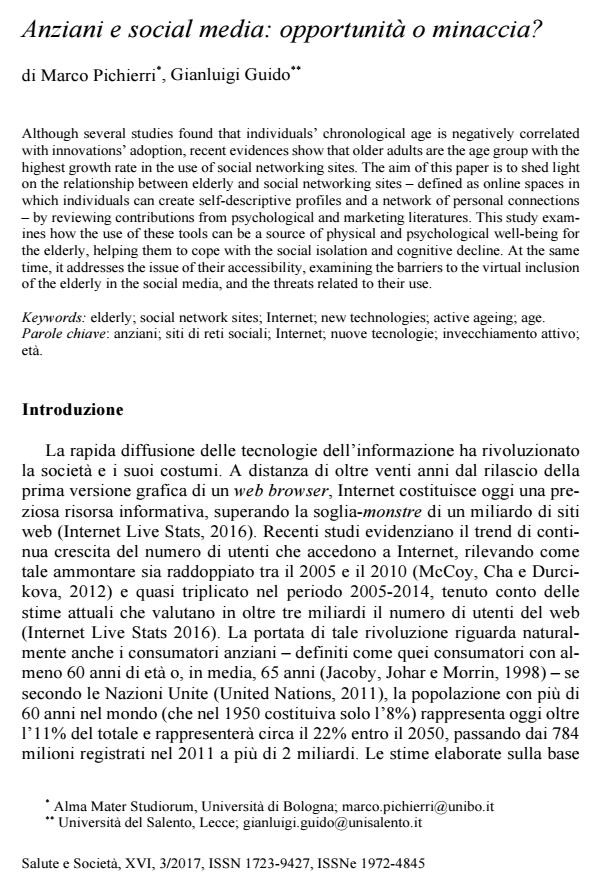Anziani e social media: opportunità o minaccia?
Titolo Rivista SALUTE E SOCIETÀ
Autori/Curatori Marco Pichierri, Gianluigi Guido
Anno di pubblicazione 2017 Fascicolo 2017/3
Lingua Italiano Numero pagine 16 P. 151-166 Dimensione file 149 KB
DOI 10.3280/SES2017-003012
Il DOI è il codice a barre della proprietà intellettuale: per saperne di più
clicca qui
Qui sotto puoi vedere in anteprima la prima pagina di questo articolo.
Se questo articolo ti interessa, lo puoi acquistare (e scaricare in formato pdf) seguendo le facili indicazioni per acquistare il download credit. Acquista Download Credits per scaricare questo Articolo in formato PDF

FrancoAngeli è membro della Publishers International Linking Association, Inc (PILA)associazione indipendente e non profit per facilitare (attraverso i servizi tecnologici implementati da CrossRef.org) l’accesso degli studiosi ai contenuti digitali nelle pubblicazioni professionali e scientifiche
Although several studies found that individuals’ chronological age is negatively correlated with innovations’ adoption, recent evidences show that older adults are the age group with the highest growth rate in the use of social networking sites. The aim of this paper is to shed light on the relationship between elderly and social networking sites - defined as online spaces in which individuals can create self-descriptive profiles and a network of personal connections - by reviewing contributions from psychological and marketing literatures. This study examines how the use of these tools can be a source of physical and psychological well-being for the elderly, helping them to cope with the social isolation and cognitive decline. At the same time, it addresses the issue of their accessibility, examining the barriers to the virtual inclusion of the elderly in the social media, and the threats related to their use.
Parole chiave:Parole chiave: anziani; siti di reti sociali; Internet; nuove tecnologie; invecchiamento attivo; età.
Marco Pichierri, Gianluigi Guido, Anziani e social media: opportunità o minaccia? in "SALUTE E SOCIETÀ" 3/2017, pp 151-166, DOI: 10.3280/SES2017-003012